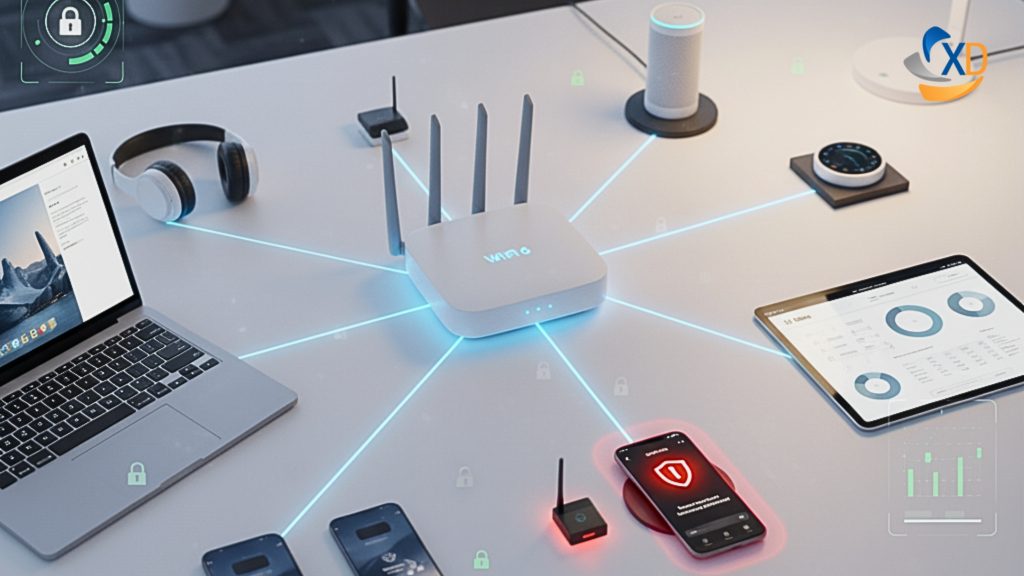Why IoT Devices Are a Hidden Security Risk for Your Business
…and how to protect your network before it’s too late

We all love the convenience of connected devices. Smart thermostats, IP security cameras, Wi-Fi printers they’re everywhere in today’s small business and home-office setups. But with that convenience comes risk. So, what risk is posed by internet of things devices?
Many Internet of Things (IoT) devices are built for speed-to-market, not security. And when they’re connected to your business network, they can become a back door for attackers.
Here’s what you need to know and how ExchangeDefender can help keep your systems safe.
The Attack Surface Just Got Bigger
Every IoT device is basically another computer on your network often with weaker defenses. From smart sensors to printers to cameras, they connect and they communicate.
A recent report found that nearly half of all network connections involving IoT devices originate from high-risk equipment (unpatched, misconfigured, or insecure).
(Source: TechRadar)
If you leave devices unmonitored or on the same network as your PCs and servers, you’re handing attackers a faster route to your data.
Built-In Weaknesses (That Attackers Love)
Here are the most common IoT failings:
- Weak/default passwords — Many devices ship with generic admin logins. (Keyfactor)
- No encryption or insecure protocols — Some devices transmit data in plain text. (EMnify)
- Unpatched firmware — Devices often stop receiving updates, leaving vulnerabilities open. (OVIC)
- Unsegmented networks — Mixing IoT with critical systems is a recipe for risk. (Fortinet)
In short: IoT devices often lack enterprise-grade security controls, making them easy entry points for hackers.
The Real-World Risks
Here’s how things can go wrong fast:
- A compromised security camera becomes part of a botnet launching attacks. (Wikipedia: Mirai Malware)
- A smart building sensor with default credentials is used to access internal systems.
- An unpatched industrial IoT device introduces ransomware into a manufacturing network.
- IoT devices leak sensitive data after vendors stop issuing updates.
If you’re a small or medium-sized business (SMB), you’re both agile and vulnerable. IoT devices often fall into the “too small to worry about” category until they become the problem.
What matters most is visibility, segmentation, and defense.
How ExchangeDefender Helps
Protecting your network doesn’t mean hunting down every smart bulb it means building layers.
- Email & threat filtering: Even if attackers get in, phishing is their next move. We block that.
- Network segmentation support: Isolate IoT traffic and protect core systems.
- Policy control & visibility: Know what’s connected and manage permissions.
- Compliance coverage: IoT vulnerabilities can lead to compliance failures: we help plug that gap.
Simple Steps You Can Take Today
- Audit: Make a list of every connected device: printers, sensors, cameras, etc.
- Segment: Create a separate network for IoT traffic.
- Update: Keep firmware current. Replace devices no longer supported.
- Secure Credentials: Change default passwords and enable MFA.
- Monitor Traffic: Watch for odd connection patterns.
- Vet Vendors: Work only with IoT vendors that offer security transparency and updates.
IoT is now part of every modern business but if you ignore it, you invite risk. By segmenting, auditing, and protecting connected devices, you can enjoy innovation and security.
ExchangeDefender helps you build a layered defense, so even the smallest device on your network doesn’t become your biggest security hole.




